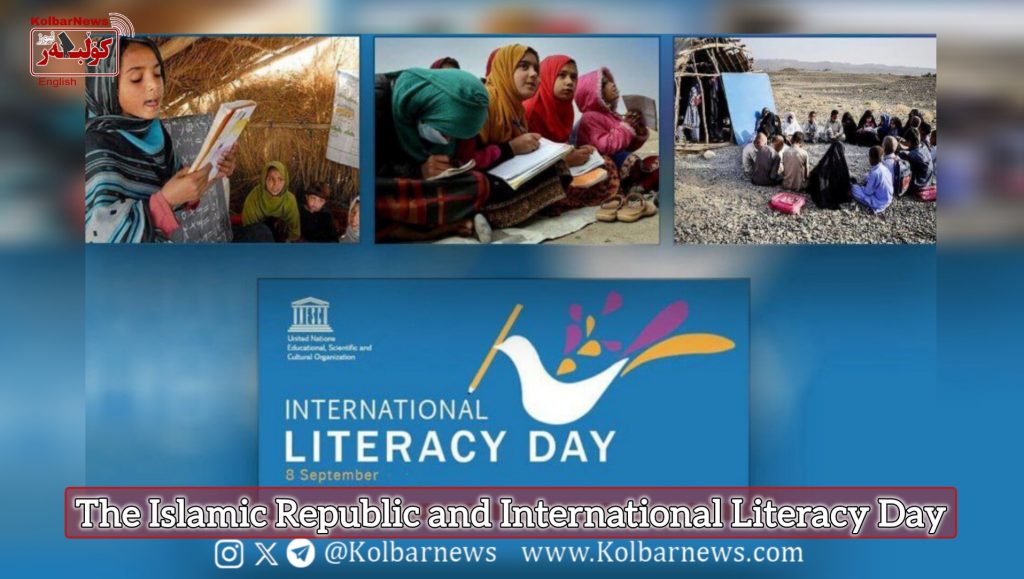
Today, Sunday, September 8th, which corresponds to the 18th of Shahrivar, is International Literacy Day. This day was added to UNESCO’s calendar in 1966, following a proposal by the United Nations Educational, Scientific, and Cultural Organization (UNESCO). According to UNESCO statistics, there are nearly 800 million illiterate people in the world. UNESCO defines illiterates as individuals deprived of the ability to read and write. However, in today’s world, being deprived of access to the internet and other communication tools should also be included in the concept of illiteracy. Therefore, the actual illiteracy rate is much higher than the reported figure. According to UNESCO estimates, due to a lack of sufficient opportunities, 30 to 50 million people are added to the global illiterate population each year. Based on UNESCO’s official statistics, around 80 million children worldwide do not even have access to basic education.
In Iran, under the Islamic regime, the Statistical Center of Iran reports that 28 million people in the country are illiterate. According to official statistics, which in no way reflect the true level of illiteracy in Iran, the country ranks 120th out of 178 countries worldwide. It is evident that the number of illiterate individuals among workers and the deprived sectors of society is much higher than among other groups. Additionally, illiteracy among women is twice that of men, and the majority of illiterate individuals live in rural areas. Among various regions of Iran, cities in Kurdistan, where children are deprived of education in their mother tongue, have the highest illiteracy rates, ranking alongside Sistan and Baluchestan. In addition to the high illiteracy rate among adults, in Iran, only 12 million out of 20 million eligible children manage to attend school.
Despite the Islamic Republic’s pretense of addressing the issue of illiteracy, most of the regime’s annual budget is allocated to military and security activities, as well as the internal and external promotion of superstition, alongside the rampant corruption in financial and administrative sectors. As a result, none of the numerous plans implemented so far have been successful.
Today, while the ability to read and write alone is no longer sufficient to be considered literate, regime officials report that 28 million people are illiterate. According to the Iranian Statistical Center’s definitions, someone who can write or read simple texts in Persian is considered literate, which is equivalent to completing the first grade. However, by modern standards, a literate person is someone who can use their literacy to enhance their knowledge, skills, and improve their life and social relationships. With computers and the internet becoming integral parts of work and life, it is essential that men and women possess at least the basic skills to use them. Those deprived of these skills are less likely to expand their knowledge, information, and abilities.
However, the issue for Iranian children, youth, and adults is not just illiteracy or semi-literacy. Beyond illiteracy, the Islamic Republic has regressed in the quality of education. Children who drop out of school are forced into the harsh labor market, and the majority of them will never have the opportunity to pursue education as adults. The regime’s leaders do everything in their power to indoctrinate these students with superstitions, devoid of independent thought, making them obedient and submissive. Education officials also send individuals known as “moral educators,” who are either clerics or trained in Islamic teachings, to schools to fill students’ time and brainwash them. Their task is to work one-on-one with students to make them more superstitious. In addition to these efforts, students are pressured or given incentives to enroll in the Basij (paramilitary group affiliated with the Revolutionary Guards).
The regime’s education officials also separate boys from girls, trying to minimize any potential for cooperation, collaboration, and shared thinking between them in schools. Forcing students to visit war zones under the “Caravans of Light” program and filling their minds with historical distortions is another issue for students. The regime’s leaders, by humiliating Afghan residents in Iran and depriving their children of education, attempt to instill Iranian nationalism and chauvinism in Iranian students’ minds. The widespread availability of cheap drugs is another problem plaguing educational environments in Iran.
These bitter realities show that the fight against illiteracy and other social crises in Iran is tied to the struggle against the Islamic Republic.
It is only with the revolutionary overthrow of this regime that Iranian society will be able to overcome these disastrous social issues.

